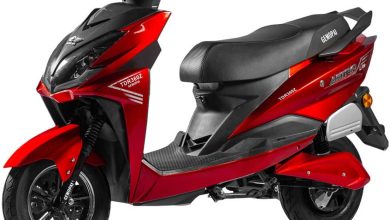How does a Diesel Generator Work?

What are Diesel Generators?
Diesel generators are incredibly important devices that supply electrical power in the case of a power outage. So lets get a fast glimpse on Diesel Generator Working Principle.
A quiet diesel generator is a combination of a diesel engine and an electric generator. That is typically used as a secondary source of electrical power in industrial and domestic units. It is available in a number of physical and electrical forms.
Before understanding the theory of diesel engine generators we need to have a grasp of its working parts. And how they contribute in generating the power.
What are the major elements of diesel generator?
A diesel generator is a device that transforms mechanical energy (from an internal combustion engine) into electrical energy. The diesel generator includes multiple components that work together to create power. The following are some of the important components of a power diesel generator:
Diesel Generator Parts and Functions
IC Engine – The engine is the major component of a diesel generator set, producing mechanical energy that is subsequently converted to electrical power. In actuality, the power output of these diesel generators is proportional to the size of the engine. The more powerful the engine is, greater output we obtain as electricity.
Alternator – Another crucial component of a diesel generator is the alternator. It transforms the mechanical input from the engine into electrical output. An alternator is formed out of a rotor that creates a magnetic field in order to generate alternating energy. This is why the rotor is referred considered as the alternator’s key component.
Fuel System – This component stores and distributes the generator’s fuel. Fuel is the most crucial ingredient to make the engine operate. The engine transfers the Chemical energy of the fuel into mechanical energy, and then this mechanical energy is turned to electrical energy. \sLubricating System – This component assures that the different components of a diesel generator function smoothly. As a consequence, it’s crucial to maintain a constant check on the generator’s lubricating system to avoid any difficulties. Since there are numerous rotating elements being functioning within a generator. It is vitally necessary to have a suitable lubrication system which not only protects against friction but also aids in cooling of the moving parts.
Control Panel — The Start/Stop button is positioned on the Control Panel, which also displays indicators for various parameters like as current, voltage, and frequency. While operating a generator it is vital to keep a watch on these factors for its proper operation, otherwise the complete generator system may fail.
Diesel Generator Working Principle
The basic concept of functioning of a diesel generator is based on the thermodynamics law of energy conversion. According to this law, energy cannot be created or destroyed, but simply transformed from one form to another.
How Electricity is Produced in Diesel Generator?
A diesel generator is constructed comprised of an engine that works on diesel fuel. During the combustion process, the chemical energy of the fuel is now transformed into mechanical energy. The mechanical energy generated is subsequently transformed into electrical energy, which may be employed in the case of a power outage.
When the Diesel Generator is started, the engine goes through its four stages of combustion, i.e Suction, Compression, Power and Exhaust. And as a consequence the chemical energy of fuel transforms into mechanical energy, which we obtain as an output at the shaft of the engine.
Now this spinning shaft is utilized to rotate the Rotor of the alternator. An alternator’s rotor and stator are the components that create electricity.
The rotor, a cylindrical element encircled by magnets, revolves inside the stator, which has a fixed arrangement of conductive copper wiring. The movement of the magnets across the wire is what creates electricity in the end.
As the rotor spins, electricity is created. The magnets encircling the rotor are precisely positioned to produce a magnetic field. As they move across the copper wiring in the stator. This magnetic field, in turn, creates electricity, which the stator catches. This power then travels to the voltage regulator, which distributes electricity to the required place controlling the voltage received. So, this is a how diesel generator works with the idea given above.
Is diesel generator AC or DC?
The output produced by the alternator in Diesel generator is an AC current which is converted to DC with the assistance of a Rectifier.
Principle underlying the rotor and stator producing electricity
When the rotor with magnets is turned within the stator consisting of copper wires , the magnetic field changes. And this change is magnetic field is responsible for creating an induced EMF at the end thus giving the current to flow.
How are diesel generators used?
The diesel engine rotates the alternator providing an AC electrical current. This is used to power electrical devices. They may be used to provide a number of applications incluhttps://genesys.pk/diesel-generators/ding as schools, hospitals, factories and households. They can be utilized either as the main source of power or in case of power breakdown. Generators have varied ratings dependent on the application, there are four basic ratings. Emergency Standby (ESP) and Limited Time Power (LTP) for standby applications, Continuous (COP) and Prime Rated power (PRP) when utilized as a main source of power. Each rating is restricted by hours and load factor.
Generators when utilized as standby, generally contain something called a Transfer Switch. This is a mechanical mechanism that avoids the generator being connected to the load at the same time as the mains power supply. When the mains power is present, connecting a generator at the same time needs to be done with particular controls to operate both in parallel. Without this control mechanism, substantial damage to the generator might occur, resulting to fires. When the mains supply has failed, connecting a generator without separating it from the mains could lead to back-feeding the grid. Perhaps killing someone working on restoring the mains supply and probably harming your generator when the mains recovers.
When utilized as the major source of power (for example when there is no mains supply, or the mains is too poor to be used) . Where bigger requirements for power exist, many smaller units can be brought together in parallel, by employing a technique known as synchronising.



